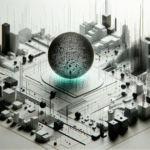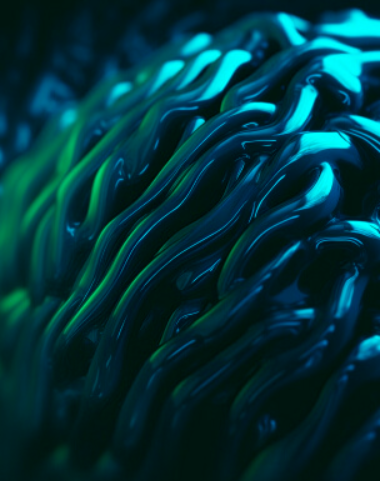Visual Inspection and AI: Transforming Quality Control Across Industries
- Embrace AI Solutions: Integrate AI-driven visual inspection systems for long-term savings in defect reduction.
- Training and Support: Equip your teams to effectively work alongside AI technologies.
- Stay Ahead of Regulations: Utilize AI to streamline compliance with consistently applied standards.
- Continuous Learning: Keep abreast of advancements in AI visual inspection for a competitive edge.
Table of Contents
- Why Visual Inspection and AI Matter
- Applications of AI in Visual Inspection
- How AI Visual Inspection Works
- The Benefits of AI in Visual Inspection
- The Future of AI Visual Inspection
- Practical Takeaways for Professionals in Pharma, Biotech, and Food Tech
- Conclusion
Why Visual Inspection and AI Matter
Quality control has always been vital in regulated industries. Ensuring products meet stringent standards affects not only consumer satisfaction but also regulatory compliance and operational costs. Traditional visual inspection methods, while reliable, are often prone to human error and can be time-consuming. Enter AI: with its ability to harness machine learning (ML) and computer vision, it significantly enhances the inspection process. This shift resolves common challenges like subjectivity in assessments and inefficiencies in detecting defects.
As industries increasingly rely on automated systems, understanding how AI can be integrated into visual inspection processes is essential. The results are a blend of speed, accuracy, and cost-effectiveness, making AI an indispensable tool across manufacturing lines, health diagnostics, and even agriculture.
Applications of AI in Visual Inspection
1. Product Defect Detection
AI systems now dominate production lines, scanning items for faults such as cracks, scratches, or missing components. By analyzing extensive datasets of labeled images, AI can learn to identify defects and ensure that only high-quality products reach consumers. The integration of AI minimizes assembly errors and reduces waste, streamlining production processes significantly.
2. Damage Detection
In industries like construction, automotive, and aerospace, detecting signs of damage—such as dents or corrosion—is vital. AI-powered imaging technologies are proficient at identifying these issues before they become detrimental, offering a level of surveillance that manual inspections may overlook.
3. Equipment and Retail Inventory Management
AI isn’t limited to product assessment. In equipment management, AI visual inspection helps monitor wear and tear, enabling proactive maintenance schedules to prevent breakdowns and unplanned downtime. In retail, AI technology can keep an eye on inventory levels and identify damaged goods.
4. Agricultural Inspection
Agriculture is yet another area where AI shines. By analyzing visual cues—such as changes in leaf color or texture—AI can identify early signs of plant diseases or stress, allowing for timely and targeted interventions, ultimately preventing crop loss and improving yields.
5. Healthcare and Autonomous Vehicles
AI’s advanced capabilities are also making waves in healthcare and autonomous vehicles. In healthcare, AI aids in diagnostics, offering precise and quick assessments based on visual inputs. In the realm of transportation, AI performs real-time environment analysis for autonomous vehicles, facilitating safer navigation.
How AI Visual Inspection Works
The mechanics behind AI visual inspection may sound complex, but they essentially boil down to a few fundamental steps:
- Image Capture: High-speed optical cameras capture high-resolution images of products in real-time.
- AI Analysis: The captured images are then processed using advanced machine learning models.
- Classification & Sorting: Once defects are identified, the system automatically flags or removes non-compliant products.
- Continuous Learning: AI-based visual inspection continuously learns from analyzed images to improve accuracy.
The Benefits of AI in Visual Inspection
- Accuracy and Objectivity: AI reduces subjectivity by establishing consistent quality control standards.
- Speed and Efficiency: Compared to manual inspections, AI systems are considerably faster.
- Enhanced Productivity: Improving defect detection rates allows companies to reduce production costs.
The Future of AI Visual Inspection
The future of AI in visual inspection is bright, with ongoing research focused on enhancing its methodologies and applications. Innovations may include better anomaly detection algorithms and enhanced real-time feedback systems.
Practical Takeaways for Professionals in Pharma, Biotech, and Food Tech
- Embrace AI Solutions: Invest in AI technologies for defect reduction.
- Training and Support: Train teams to work effectively with AI.
- Stay Ahead of Regulations: Streamline compliance with AI’s consistent standards application.
- Continuous Learning: Participate in events to stay updated on AI developments.
Conclusion
The integration of AI into visual inspection processes has transformed industries by providing accurate and efficient quality control mechanisms. With applications ranging from manufacturing to healthcare, AI technology continues to evolve and enhance precision and reliability across sectors.
At QPS Engineering, we understand the critical nature of quality management in regulated industries. Our expertise enables us to support your transition to AI-driven systems effectively. Interested in transforming your quality control process? Explore our services or reach out to our team via LinkedIn to learn more.







